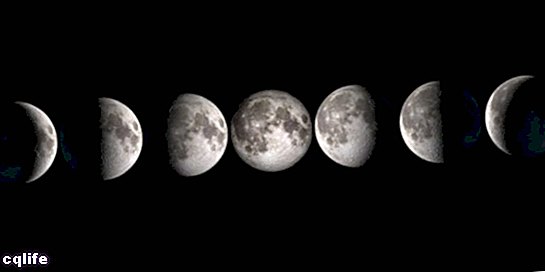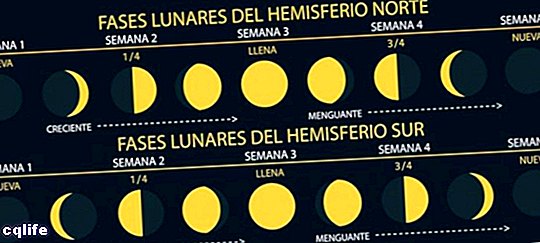- What are the phases of the Moon?
- What are the phases of the moon?
- Importance of the phases of the moon
We explain what the phases of the Moon are and what are, their causes and impact on various cultures from ancient times to today.

What are the phases of the Moon?
The lunar phases or phases of the Moon are the apparent changes of the visible portion of Moon, depending on how illuminated it is by its position relative to the Earth and the Sun.
It is not about real changes in the nature of our single satellite, but about its relative position and its illumination, thus allowing us to observe more or less of its surface with the naked eye. To each position, thus, we give the name of a phase. Following these lunar phases the human being has created the lunar calendar.
The phases of the Moon make up, in their entirety, a 28-day cycle that we know as the lunation or lunar cycle, which goes from the total illumination of the Moon to its total concealment. It has nothing to do with lunar eclipses, although the latter can reproduce certain phases artificially.
The explanation of this lunar cycle has to do with the orbit of the Moon around our planet, which is completed in its entirety every four weeks. This is known as the sidereal month.
At the same time, and since the Moon lacks its own brightness, the illuminated portion of the Moon varies depending on how exposed it is to the Sun, although the face that the Moon offers us is always the same.
What are the phases of the moon?

The lunar cycle is made up of eight phases, which repeat from the first to the last.
- New moon or black moon. In the initial stage of the cycle, the part of the Moon is illuminated by the Sun, it is not visible from the Earth. In these cases the Moon can only be observed during solar eclipses. From this phase, the moon "grows" in apparent brightness.
- Crescent moon. The first appearance of the Moon in the traditional sky, two days after the previous phase, is like a small scythe of light, from its right side in the northern hemisphere and its left side in the southern hemisphere. This moon can be seen at times of day.
- Crescent quarter. Four days after the previous phase, the Moon appears with half its circumference illuminated and the other half in shadow (again, the illuminated half will be the right in the northern hemisphere and the left in the southern hemisphere). This phase can be seen at noon or midnight.
- Crescent gibbous moon. The darkened half of the previous phase gradually brightens, as it acquires a convex shape on both sides.
- Full moon. The entire lunar circle is in this illuminated phase, so we can see it in its fullness. This total appearance marks the middle of the lunar month (14 days, 18 hours, 21 minutes and 36 seconds).
- Waning gibbous moon. After the full Moon has already passed, the "decrease" of the lunar brightness begins, returning to a concave appearance as it darkens.
- Last quarter. A phase similar to the first quarter, in which the Moon is illuminated in the middle, only in the opposite direction. The moon can be seen in the sky during the morning hours.
- Waning moon. Also known as "waning crescent" or "old moon", it is similar to the waxing moon, but in the opposite direction. It can only be seen at dawn, in the shape of a small scythe of light.
Importance of the phases of the moon
The phases of the Moon are part of the astronomical phenomena that the humanity he has observed since ancient times, and on the basis of which he has set numerous calendars.
Lunar calendars were widely used by ancient cultures such as the Egyptian or the Babylonian. They inspired numerous myths Y legends, which offered explanations about the appearance and disappearance of the Moon. Also its apparent coincidence with the feminine menstrual cycle motivated that the Moon was assimilated with the feminine in numerous cultures.
Thus, according to popular culture, the lunar phases could affect the growth of crops, human hair and even the development of pregnancy and childbirth.
